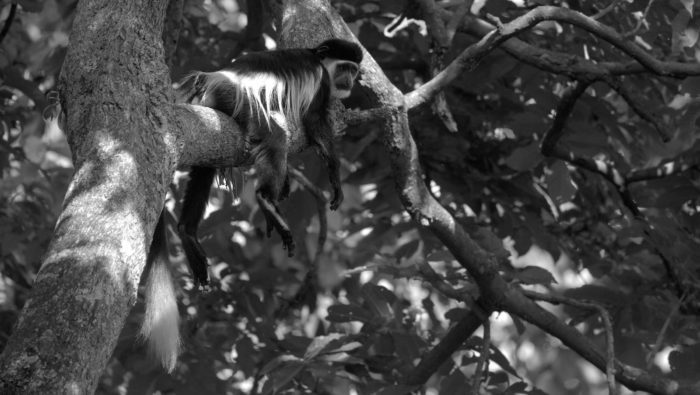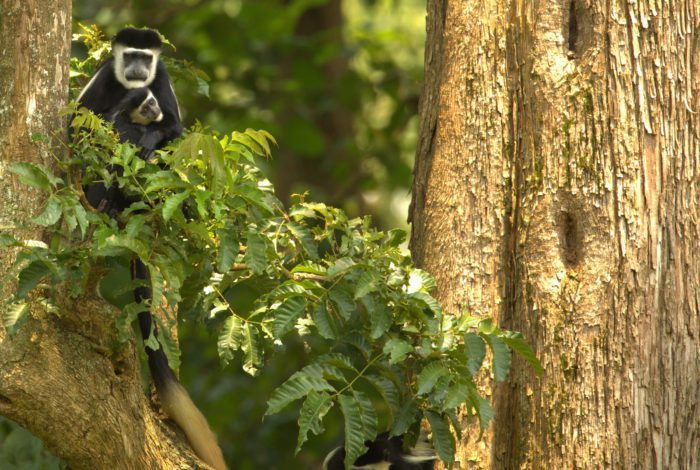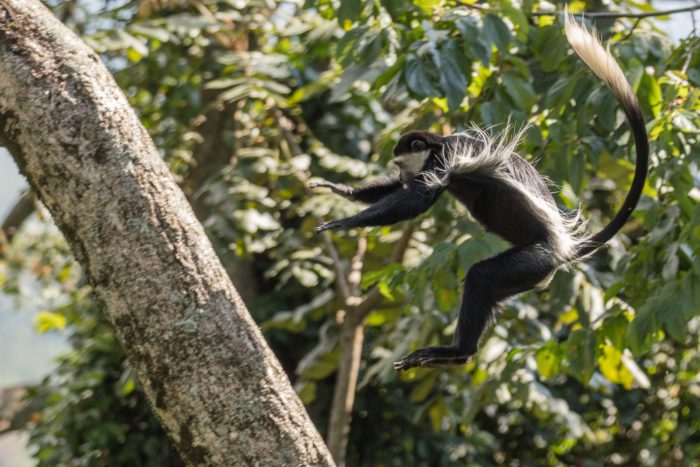Support Gorilla Conservation >

There are 5 species and various subspecies of black and white colobus found in Central and East Africa, the ranges of which overlap in many areas. Unlike other primate species, colobus monkeys have four hooklike digits and no thumbs; hence, the name colobus, derived from the Greek word “mutilated.”
By living in tropical and subtropical habitats and being leaf-eaters, colobus monkeys have an advantage over fruit-eating primates through year-round access to their primary food source. They are also known to eat flowers, bark and soil, which their complex stomachs, enlarged salivary glands and specialised anaerobic bacteria help them to digest.
 ©Roelof Schutte
©Roelof Schutte
The diets of colobus monkeys consist mainly of buds, leaves and a little fruit. Often the leaves they eat have little nutritional value, meaning they must consume large quantities to survive. Their four-chambered stomachs allow them to process foods such as unripened fruit, mature leaves and toxic foliage that other types of monkey would find inedible.
Relatively small troop sizes and the fact that colobus monkeys are territorial means that there is reduced competition for food and conflict amongst troop members, especially when compared to other species of monkey. Females remain in their birth groups for the entirety of their lives, whereas mature males must migrate in order to reproduce.
 ©Roelof Schutte
©Roelof Schutte
As highly arboreal species, colobus troops rarely leave the canopy, springing between branches, which they utilise as trampolines to jump distances of up to 50 ft (15 m). Troops normally consist of 5 to 15 individuals, containing mostly females, their all-white infants and presided over by a dominant male.
The particularly long coat of the colobus is also believed to act like a parachute as it traverses the canopy, slowing it down safely between leaps. Adult colobus monkeys weigh 11 to 30 lbs (4 to 14 kg) and can be up to 30 inches (75 cm) long.

©Adam Keifer
The long black furs of these monkeys are flanked by horseshoes of white that join across the lower back. The hair around the face and their tasselled, nonprehensile tails are also bright white. Colobus monkeys are famed for flaunting these elegant adornments as they relax in the treetops, all 5 species being relatively mellow primates.
Colobus monkeys typically live deep in various types of forest including montane, mopane and gallery forests, as well as bamboo stands. Unlike other species of primate, such as baboons, they do not venture into areas of savannah. Habitat destruction and fragmentation make it more difficult for these monkeys to survive.

Wildlife
Explore
Explore Shop